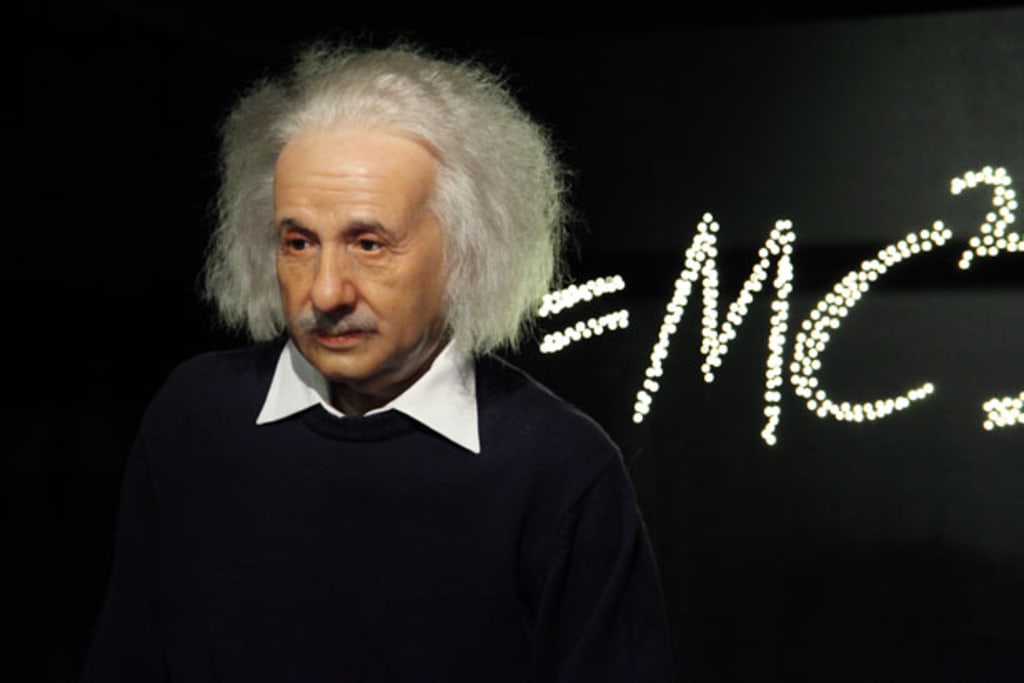How was Albert Einstein's brain distinct from a typical human being?
How was Albert Einstein's brain different from that of a typical person?

We all know that Albert Einstein was a genius, and his brain could work better than that of more than a thousand scientists’. Things that we have never thought of, Einstein worked on them, and made them easy for the whole world.
Albert Einstein was a physicist who published the theory of special relativity (e is equal to MC squared.) He also formulated the photoelectric laws, which amazed the whole world. He was therefore awarded the Nobel Prize.
Seeing his extraordinary thinking and understanding power, people believe that Einstein had an extraordinary brain, that was quite different from an ordinary human brain. Einstein also knew this which was why he didn't want his body to be researched after his death.
Rather, he had instructed that his body, and especially his brain, would be cremated. The same thing that Einstein was afraid of taking place. On April 13, 1955, Albert Einstein died in a Princeton hospital. The doctor came to perform the autopsy and stole Einstein's brain secretly.
He was curious to know what was inside the brain of this genius. The doctor who stole Einstein's brain was Dr. Thomas Harvey. He was more interested in studying his brain than facing the consequences. When the Princeton Hospital learned of this incident, they fired him. However, Dr Harvey was successful in convincing Hans Albert, who was the son of Albert Einstein, to give him permission to conduct research on his father's brain and let the world know about it.
From that day on, a long journey started for that brain. Dr. Harvey was a pathologist who knew only about postmortems, and that's why he believed that he would be able to research this genius's brain. The situation was that Dr. Harvey lost his job at Princeton Hospital, so he took Einstein's brain to Pennsylvania. Here, he took a lot of photos of the brain and cut them into 240 small pieces. After preserving every piece in separate jars, he hid all of them in his basement.
He had arguments with his wife because of this, and his wife used to threaten him that she would throw this brain outside on the street. The arguments eventually led to divorce and Dr. Harvey went to Kansas with the brain where he started working as a medical supervisor. In his free time he tried to study Einstein's brain. Consequently, he frequently switched jobs and moved to different cities.
After many years Dr. Harvey couldn't do any solid research on Einstein's brain. Instead his medical license was canceled, and the situation was so bad for him that he had to start working in a plastics factory. At the time, he made a good decision to send different pieces of the brain to the best neurologist in the world for detailed research.
Many neurologists published several studies on this genius's brain where it was found that Einstein's brain was quite different from the ordinary human brain. The biggest difference was found in the corpus callosum section of the brain.
Now it is important to note that the human brain is divided into two parts where the left brain controls the right portion of the body, and the right brain controls the left portion of the body. For 90 percent of humans, the left brain is responsible for speech, understanding mathematical calculations, and writing. The right brain is responsible for creativity, understanding of shapes, art and music.
Here the question is, what does the corpus callosum do? Imagine typing on a keyboard with both hands active; the left hand is typing some letters and the right hand is doing the same. If your left hand made a mistake during typing and you quickly corrected it with your right hand, that means that your right brain corrected the mistake by signaling the left brain the link that connects the two halves.
Researchers think that Einstein's brain pattern, which was significantly distinct from others, is what accounts for his brain's healthy neuron flow. He was highly capable of performing mathematical calculations because of his healthy neuronal activity.
According to a research paper, Albert Einstein had the ability to solve difficult mathematical equations in his head without using pens and paper. Einstein's brain was weighed and it contained 1230 grams, compared to 1400 grams for a typical human being.
The biggest question was whether Einstein was born with such a special brain or if there were changes that were made later. After researching, it was discovered that when Einstein was born, he started speaking after the age of five, while other children started speaking at the age of two or three. Even after he started speaking, he didn't like to speak much and remained lost in his own thoughts.
Additionally, by the age of 14, he attained mastery in integral and differential calculus. From a young age, Einstein wanted to sum up the laws of the universe in a simple equation, and this became his life's mission. At the age of 26, Einstein published four research papers and surprised the world, and as a result, he was awarded a PhD degree. Professors used to get nervous when Einstein raised his hand to ask questions because his questions were frequently difficult for even teachers to understand.
About the Creator
Althea March
I am a writer who searches for facts to create compelling nonfictional accounts about our everyday lives as human beings, and I am an avid writer involved in creating short fictional stories that help to stir the imagination for anyone.






Comments
Althea March is not accepting comments at the moment
Want to show your support? Send them a one-off tip.